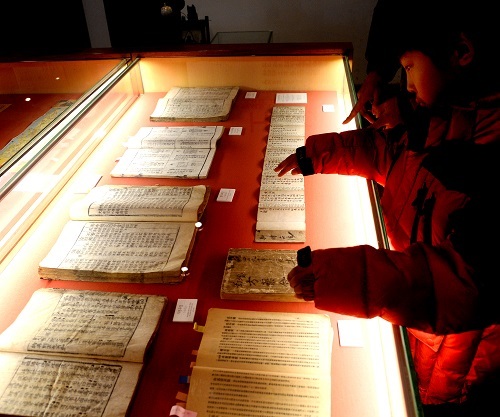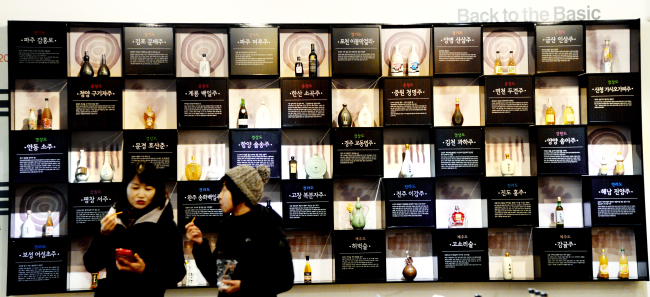There’s an ancient folktale that tells the story of a monkey who blushed and smiled uncontrollably after gorging on a fermented apple he found on the ground. After a farmer noticed the monkey’s pleasant reaction to eating the old piece of fruit, he wondered if humans could enjoy the same blissful side effect, which led to the invention of alcohol.
 |
Visitors learn the history of traditional Korean liquor products at the Sansawon gallery in Pocheon, Gyeonggi Province. (Park Hyun-koo/The Korea Herald) |

Although the country’s most famous alcohol-based beverages are soju and makgeolli, it is estimated that the country has roughly 600 different types of liquor, with some historians claiming that a number of traditional brews were lost following Japan’s colonization of the peninsula.
And while rice is the main ingredient for almost all of the country’s traditional liquors, the way Koreans use yeast is said to provide its greatest distinguishing characteristic from other traditional Asian alcohols, which are also typically rice-based drinks.
“It’s a bit tricky when it comes to comparing and contrasting traditional Korean liquors with alcohol that’s made overseas,” he explained. “It’s not really fair at all to compare Korean liquor to those that are made in the West like Europe because it’s just a completely different process.”
“But in the case of how Korean rice wine like makgeolli differs from Japanese rice wine such as sake, is that we use yeast,” he added. “We use nuruk (a kind of cake containing yeast) to help the fermentation process, and this use of yeast gives makgeolli a distinctive flavor that other Asian alcohols don’t have.”
Also on display at the gallery basement floor is a memorial exhibition entirely dedicated to late Bae Sang-myeon, founder of Kooksoondang Brewery and father of Bae Yeong-Ho, the founder and owner of Baesangmyeon Rice Liquor Brewery.
For those interested in a more interactive approach to their day of educational booze-filled fun, the Sansawon also offers a home brewing class that provide visitors with an opportunity to learn about traditional liquor culture as well as offering guest hands-on tutorials on how to make their own, home-brewed creations (advance reservations are required).
Sansawon opens on weekdays from 8:30 a.m. to 5:30 p.m. with admission cost listed at 2,000 won. For more information, visit www.sansawon.co.kr.
By Julie Jackson (juliejackson@heraldcorp.com)







![[Today’s K-pop] Blackpink’s Jennie, Lisa invited to Coachella as solo acts](http://res.heraldm.com/phpwas/restmb_idxmake.php?idx=644&simg=/content/image/2024/11/21/20241121050099_0.jpg)